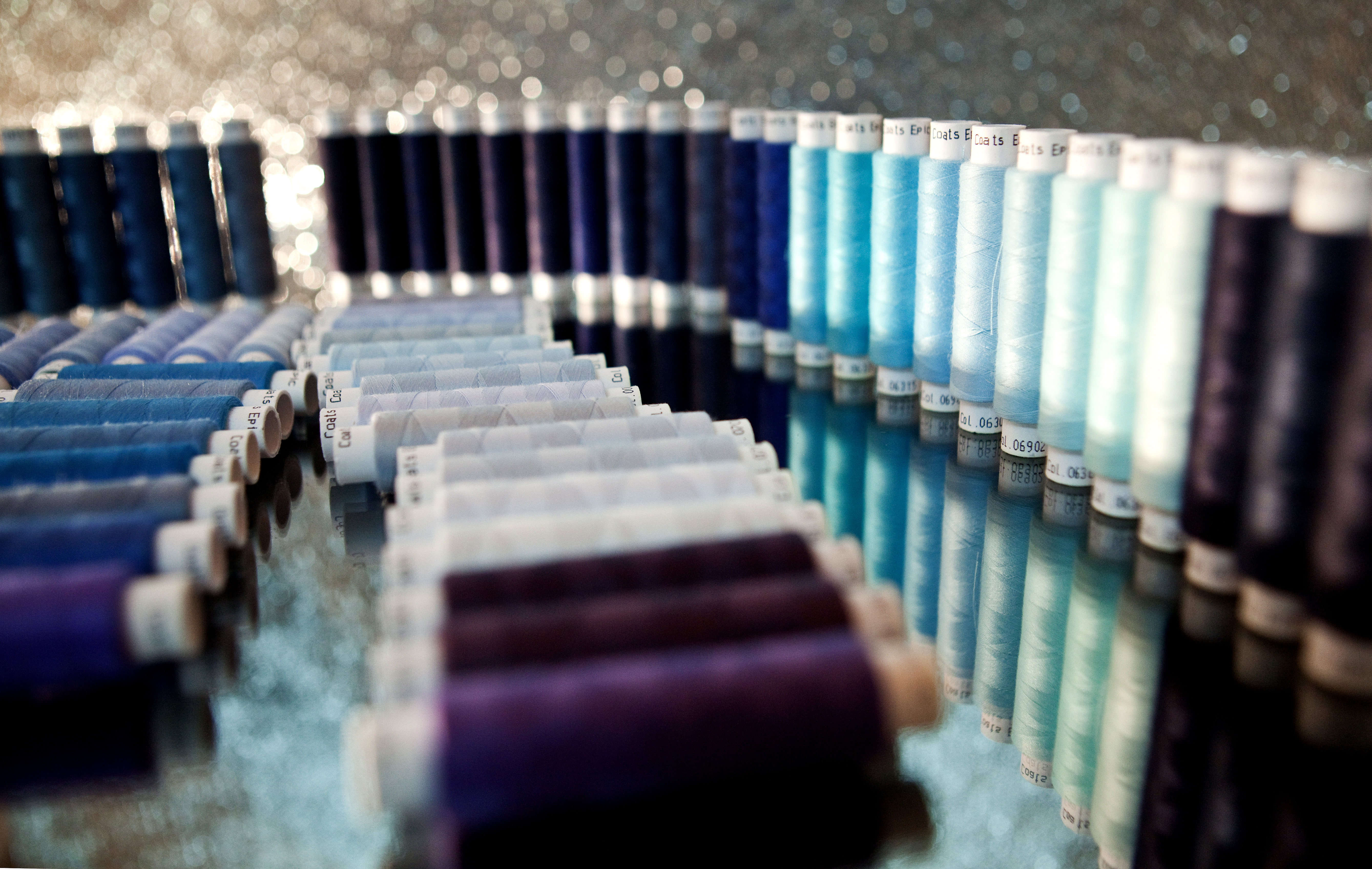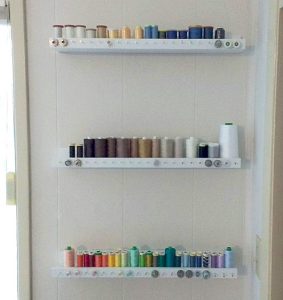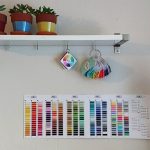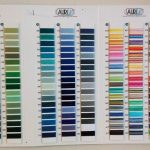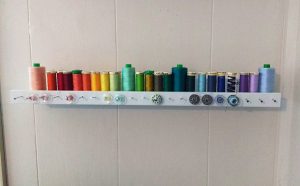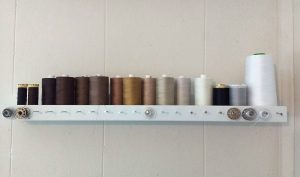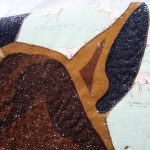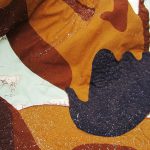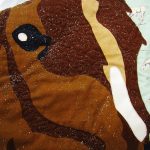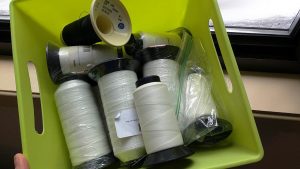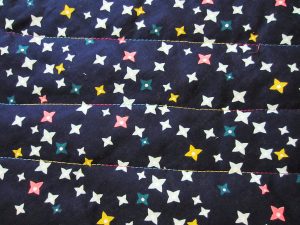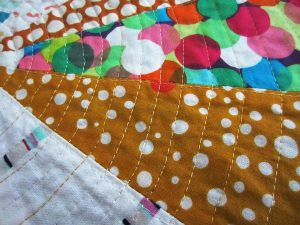Have you ever gone to the fabric store and been overwhelmed looking at the vast assortment of thread for sale? If so, then fear not, for I will help to break down the mystery of thread and how to use it in all its various types.
To start, consider where you are going to store your thread. I’m a highly visual person and I like to see what I have on hand. I also find looking at thread to sometimes motivate me or inspires me to begin on new projects. I created this thread display in my sewing room using Ikea picture frame shelves (Ikea Ribba) and I added small nails to hang my bobbins by the corresponding color of thread.
I live in a rural area, three hours from the nearest Joann Fabrics. Because of that I keep an Aurifil Thread Color Card so I can easily order the exact shade of thread I need. It also looks beautiful too, no?
Thread Weight
When choosing thread, consider the thread weight. A quick breakdown of Aurifil’s brand thread weights (and their many great brands of thread, including Guterman and Coats & Clark) looks like this:
12wt: Use it for sashiko & red work stitchery. This is the thickest thread in the Mako’ range.
28wt: It is strong enough to withstand the stress of hand quilting without needing to be glazed or waxed.
40wt: Favorite thread for machine quilting and all-purpose sewing. A little heavier to show off the quilting stitches.
50wt: Quilters love it for its piecing and quilting. A staple for every sewing studio.
80wt: This is the finest Egyptian cotton, for use by hand or machine. Your new ‘go to’ thread for applique and much more.
~ Thread descriptions from Hawthorne Threads
Buying at a fabric store is actually a little easier than sussing things out online because they divide thread into sections so you can quickly scan for ‘quilting’ or ‘embroidery’ or ‘heavy duty/jeans.’
I keep my standard, quilting cotton weight threads organized by ROYGBIV (red, orange, yellow, green, blue, indigo, violet).
I also keep my neutrals and browns organized by gradient.
Buying a lot of shades of one color can greatly help when working on projects with a ton of variation in the same tone, like in this quilt I recently finished. I used five different shades of brown and black to finish the horse.
Utility/Novelty Threads
These are threads you reach for when you need to pull out the big guns or you are just doing something different. I use some of these heavy weight threads for upholstery, corduroy, vinyl, or very thick or unique fabrics.
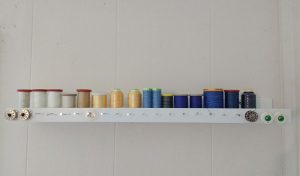
I use some of these heavy weight threads for upholstery, corduroy, vinyl, or very thick or unique fabrics.
This is my tub of very heavy duty threads. I use them on marine projects and with my industrial sewing machine.
Variegated Thread
I saved these threads for last because they are my favorite. If you haven’t tried sewing with them yet, I encourage you to start today. The richness of their color variation is an absolute delight to the eye and often can take your projects to a whole other level.
I used two spools of variegated thread on this quilt. The blue/rainbow you can see here.
And the gorgeous bright yellow here.
Of course, with different threads you will need different needles, but I’ll save the topic of needles sizes and shapes for another post. What are your favorite types of threads? Let us know in comments!

